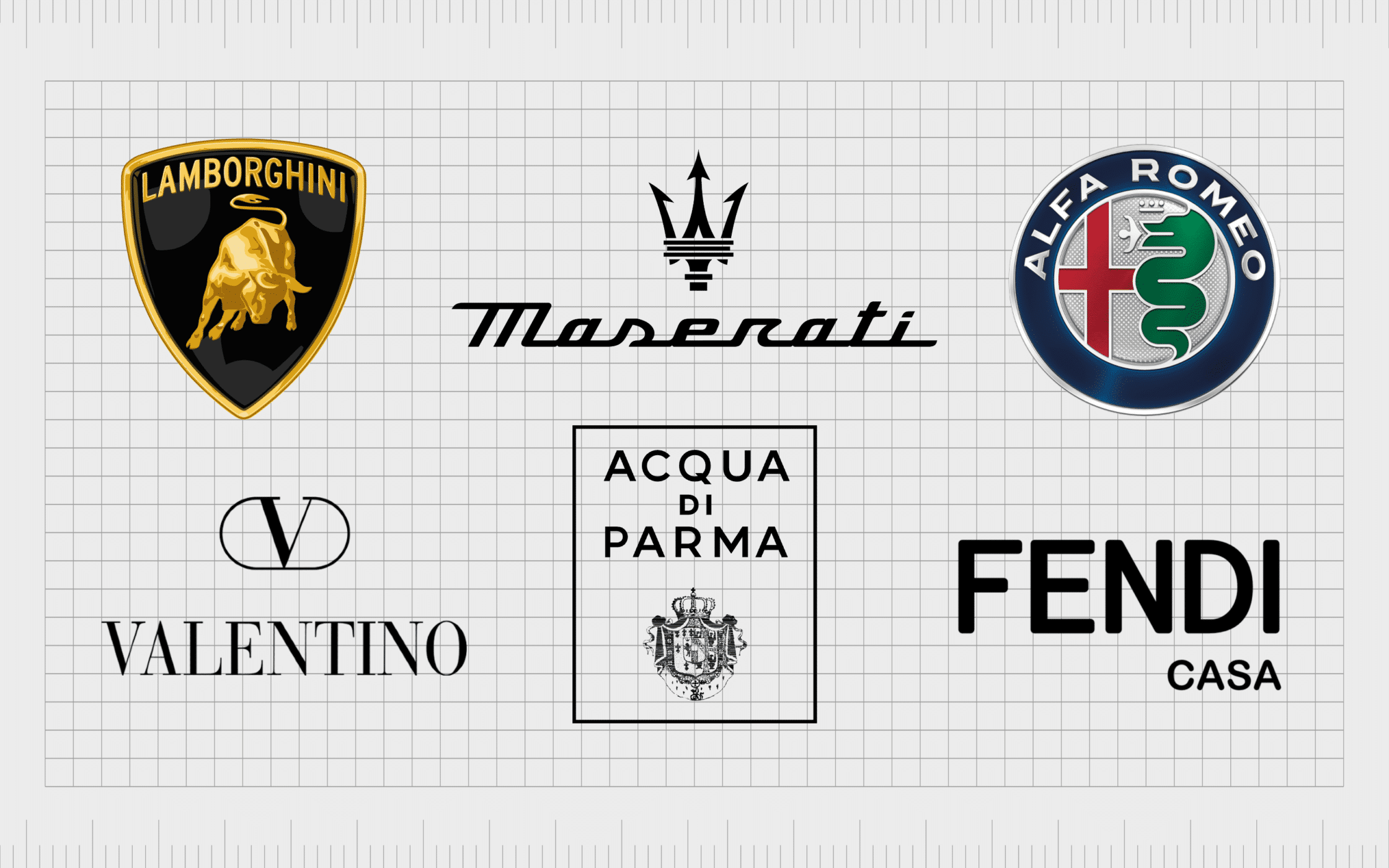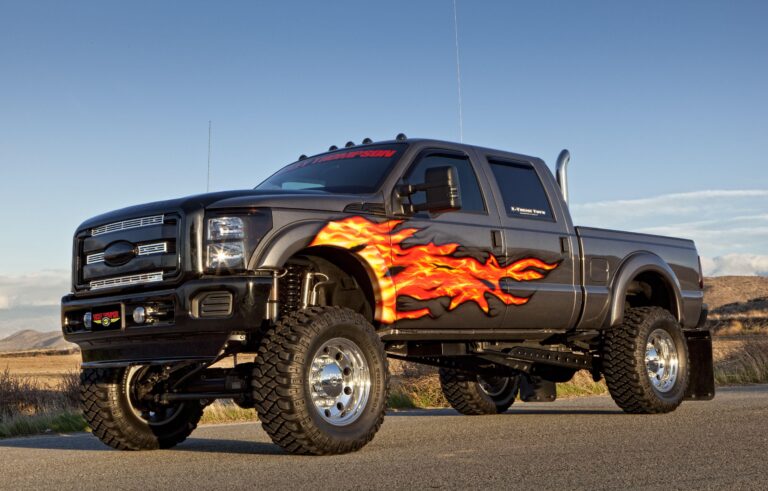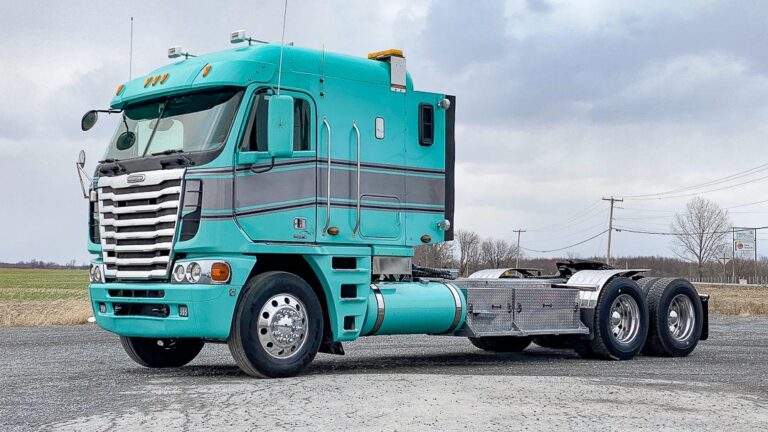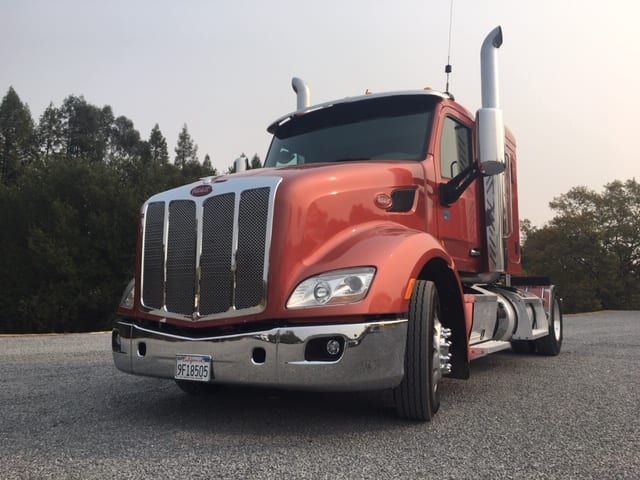Swedish Luxury Car Brands: A Deep Dive into Understated Elegance and Innovation
Swedish Luxury Car Brands: A Deep Dive into Understated Elegance and Innovation cars.truckstrend.com
In the opulent world of luxury automobiles, where German precision, British heritage, and American grandeur often dominate the narrative, Swedish luxury car brands carve out a distinct and highly respected niche. Far from the flashy exuberance, Swedish luxury embodies a philosophy of human-centric design, unparalleled safety, environmental responsibility, and understated elegance. It’s a luxury defined not by ostentation, but by intelligent design, meticulous craftsmanship, and a profound understanding of the user’s needs. This comprehensive guide will explore the unique identity and offerings of Swedish luxury car brands, primarily focusing on Volvo Cars and its electric performance offshoot, Polestar, which together define the modern Swedish luxury automotive experience.
The Essence of Swedish Luxury: More Than Just a Car
Swedish Luxury Car Brands: A Deep Dive into Understated Elegance and Innovation
Swedish luxury is a concept deeply rooted in the nation’s cultural values: functionality, minimalism, sustainability, and a deep respect for human well-being. In the automotive realm, this translates into vehicles that prioritize comfort, intuitive technology, and a serene driving experience, all while maintaining an unwavering commitment to safety and environmental stewardship. Unlike some luxury marques that might lean into aggressive aesthetics or raw power as their primary appeal, Swedish brands offer a sanctuary on wheels – a calm, intelligent, and responsible mode of transport that enhances daily life rather than merely serving as a status symbol.
The Pillars of Swedish Automotive Luxury: Volvo Cars
Volvo Cars, founded in 1927, has long been synonymous with safety. However, over the past two decades, the brand has meticulously cultivated a sophisticated luxury identity that extends far beyond its formidable safety credentials. Volvo’s transformation has seen it evolve into a premium marque that seamlessly blends Scandinavian design principles with cutting-edge technology and a clear vision for the future of mobility.
Design Philosophy and Craftsmanship
Volvo’s design language is characterized by clean lines, harmonious proportions, and a sense of timelessness. The interiors are a masterclass in Scandinavian minimalism, eschewing clutter in favor of intuitive layouts and high-quality, sustainably sourced materials. Think open-pore wood, fine Nappa leather, crystal glass accents (from Orrefors, for instance), and tailored wool blends. Every element feels deliberate and contributes to an atmosphere of calm and sophistication. The focus is on tactile quality and visual serenity, creating an inviting cabin that prioritizes driver and passenger well-being.
Unwavering Commitment to Safety
While luxury is now a core tenet, safety remains Volvo’s bedrock. From inventing the three-point seatbelt in 1959 and sharing the patent freely, to pioneering advanced driver-assistance systems (ADAS), Volvo has consistently pushed the boundaries of automotive safety. Modern Volvos are equipped with a suite of active and passive safety features, including advanced collision avoidance systems, intelligent cruise control, lane-keeping aid, and sophisticated body structures designed to protect occupants in various crash scenarios. Their "Vision 2020" aimed for no one to be seriously injured or killed in a new Volvo, a testament to their continuous pursuit of ultimate safety.
Technological Integration and User Experience

Volvo cars feature intuitive infotainment systems, often powered by Google Android Automotive OS, offering seamless integration with digital services and applications. Connectivity, over-the-air updates, and advanced semi-autonomous driving features like Pilot Assist contribute to a relaxed and intelligent driving experience. The technology is designed to be helpful and unobtrusive, enhancing comfort and convenience without overwhelming the driver.
Sustainability and Electrification
Volvo is a pioneer in the luxury segment’s shift towards sustainability. They were among the first premium brands to commit to widespread electrification, aiming for an all-electric lineup by 2030. This commitment extends beyond powertrains to include sustainable manufacturing processes, ethical sourcing of materials, and efforts to reduce the carbon footprint across their entire value chain. Their Recharge models (PHEV and BEV) represent a significant step in this direction, offering powerful performance with reduced emissions.
Key Luxury Models
- XC90: The flagship SUV, known for its commanding presence, luxurious seven-seat interior, and comprehensive safety features.
- S90: The elegant executive sedan, offering a refined ride and a spacious, sophisticated cabin.
- V90 Cross Country: A versatile and stylish wagon that blends SUV capability with sedan-like driving dynamics, embodying the practical luxury ideal.
- XC60: A popular mid-size SUV that balances compact dimensions with premium features and a dynamic driving experience.


The Electric Horizon: Polestar
Emerging from Volvo’s performance division, Polestar has rapidly established itself as a standalone electric performance luxury brand. While sharing Volvo’s foundational commitment to safety and human-centric design, Polestar distinguishes itself with a more avant-garde aesthetic, sharper driving dynamics, and an even bolder commitment to electric mobility and transparency.
Design Language and Performance Focus
Polestar’s design is minimalist yet assertive, characterized by sharp lines, aerodynamic profiles, and a futuristic appeal. The brand embraces a "less is more" philosophy, focusing on essential elements to create a powerful visual statement. Performance is central to Polestar’s identity, with their electric powertrains delivering instant torque and exhilarating acceleration, offering a thrilling yet refined driving experience.
Sustainability and Transparency
Polestar is a trailblazer in sustainability, not just by producing electric vehicles, but by emphasizing transparency throughout its supply chain. They publish detailed lifecycle assessments for their vehicles, highlighting their carbon footprint from production to end-of-life. Their commitment extends to exploring innovative, low-impact materials and pushing for a circular economy in automotive manufacturing. This level of openness is a new form of luxury – the luxury of knowing your car is built with a conscience.
Cutting-Edge Technology
Polestar vehicles feature state-of-the-art technology, including the advanced Android Automotive OS infotainment system with Google services built-in. Over-the-air updates ensure the vehicles constantly evolve with new features and improvements. Their electric architecture is designed for optimal efficiency and performance, often incorporating advanced battery technology and rapid charging capabilities.
Key Models
- Polestar 1: A limited-production, high-performance plug-in hybrid grand tourer, showcasing Polestar’s design and engineering prowess.
- Polestar 2: The brand’s mass-market electric fastback, known for its engaging driving dynamics, innovative interior, and competitive range.
- Polestar 3: A performance SUV and the brand’s first true SUV, designed to combine luxury, sustainability, and electric power.
- Polestar 4: An electric SUV coupe, further expanding Polestar’s design language and performance offerings.
Distinctive Characteristics of Swedish Luxury
Swedish luxury cars stand apart due to several defining characteristics:
- Safety First, Always: While all luxury brands emphasize safety, Volvo’s and Polestar’s commitment is unparalleled, forming the very foundation of their engineering.
- Human-Centric Design: Every aspect, from seat ergonomics to infotainment interface, is meticulously crafted to enhance comfort, ease of use, and overall well-being.
- Understated Elegance: Rather than flashy chrome or aggressive styling, Swedish luxury embraces clean lines, natural materials, and a sophisticated, timeless aesthetic that speaks of quiet confidence.
- Sustainability and Responsibility: Leading the charge in electrification and sustainable practices, these brands appeal to environmentally conscious luxury buyers.
- Technological Innovation with Purpose: Technology is seamlessly integrated to improve safety, convenience, and connectivity, never for the sake of novelty.
- Serene Driving Experience: A focus on quiet cabins, refined ride quality, and intuitive controls creates a remarkably calm and enjoyable journey.
Why Choose Swedish Luxury? Practical Advice and Considerations
Choosing a Swedish luxury car means opting for a distinct set of values.
Benefits:
- Peace of Mind: Unrivaled safety features provide an unparalleled sense of security for you and your loved ones.
- Unique Aesthetic: Stand out from the crowd with a sophisticated, minimalist design that ages gracefully.
- Environmental Responsibility: Drive a vehicle from brands actively leading the charge towards a sustainable automotive future.
- High Quality and Durability: Built to last, Swedish cars are known for their robust construction and reliability.
- Comfort and Ergonomics: Interiors are designed for long-distance comfort, with supportive seating and intuitive controls.
- Strong Resale Value: Especially for Volvo, their reputation for safety and reliability often translates to good resale value.
Considerations:
- Price Point: Swedish luxury cars are priced comparably to their German and American counterparts, reflecting their premium quality and technology.
- Performance Focus (Volvo): While powerful, Volvo models generally prioritize comfort and safety over outright sporty performance (though Polestar fills this gap).
- Limited Customization Options: While offering premium materials, the range of individual customization might be slightly less extensive than some ultra-luxury brands.
- EV Charging Infrastructure (Polestar): As with any EV, access to convenient charging infrastructure is a crucial consideration.
Challenges and Future Outlook
Swedish luxury brands face intense competition from established giants and emerging electric vehicle players. The transition to fully electric lineups presents significant manufacturing and supply chain challenges. However, their unwavering commitment to their core values – safety, sustainability, and human-centric design – positions them strongly for the future. As the automotive world increasingly values responsible consumption and innovative technology, Swedish luxury brands are poised to continue their growth, appealing to a discerning clientele who seek more than just opulence in their vehicles. They represent a compelling vision for the future of luxury, where conscience and craftsmanship drive innovation.
Swedish Luxury Car Brands: Representative Starting Price Ranges
Please note: Prices are highly variable based on model year, trim level, optional features, region, and market conditions. These are representative starting price ranges in USD for new models and should be used as a general guide.
| Brand | Model | Vehicle Type | Representative Starting Price Range (USD) | Key Feature / Identity |
|---|---|---|---|---|
| Volvo | S60 | Compact Luxury Sedan | $43,000 – $55,000 | Dynamic driving, compact luxury |
| Volvo | S90 | Executive Luxury Sedan | $59,000 – $70,000 | Refined elegance, spacious interior |
| Volvo | V60 Cross Country | Compact Luxury Wagon | $50,000 – $60,000 | Versatile, rugged elegance |
| Volvo | V90 Cross Country | Executive Luxury Wagon | $59,000 – $70,000 | Ultimate versatility, premium comfort |
| Volvo | XC40 | Compact Luxury SUV | $40,000 – $55,000 | Urban agility, distinctive design |
| Volvo | XC60 | Mid-size Luxury SUV | $47,000 – $65,000 | Balanced performance, family-friendly luxury |
| Volvo | XC90 | Full-size Luxury SUV | $57,000 – $85,000+ | Flagship SUV, 7-seater, comprehensive safety |
| Volvo | C40 Recharge | Compact Electric SUV Coupe | $55,000 – $65,000 | All-electric, distinctive coupe design |
| Volvo | XC40 Recharge | Compact Electric SUV | $54,000 – $64,000 | All-electric, practical urban SUV |
| Polestar | Polestar 2 | Electric Fastback | $50,000 – $65,000 | Performance EV, minimalist design, Google OS |
| Polestar | Polestar 3 | Electric Performance SUV | $75,000 – $90,000+ | Premium electric SUV, advanced tech |
| Polestar | Polestar 4 | Electric SUV Coupe | $60,000 – $75,000+ | Sleek design, performance-oriented EV |
| Polestar | Polestar 1 | Performance Hybrid GT | Limited Production, ~$155,000 | Exclusive halo car, hybrid performance (no longer new) |
Disclaimer: Prices are approximate and subject to change based on market conditions, trim levels, optional features, and regional variations. Always consult official brand websites or dealerships for the most accurate and up-to-date pricing.
Frequently Asked Questions (FAQ) about Swedish Luxury Car Brands
Q1: What makes Swedish luxury cars different from German or British luxury brands?
A1: Swedish luxury emphasizes human-centric design, unparalleled safety, environmental sustainability, and understated elegance over ostentatious displays of wealth. While German brands often focus on performance and precision engineering, and British brands on heritage and craftsmanship, Swedish brands offer a more serene, practical, and ethically conscious luxury experience.
Q2: Are Volvo and Polestar the only Swedish luxury car brands currently in production?
A2: Yes, in terms of globally recognized luxury passenger car brands, Volvo Cars and its electric performance spin-off, Polestar, are the primary Swedish luxury manufacturers currently in production. Saab, another historical Swedish brand, ceased car manufacturing operations years ago.
Q3: Are Swedish luxury cars reliable?
A3: Generally, yes. Volvo, in particular, has a strong reputation for building durable and reliable vehicles. While any luxury car can incur higher maintenance costs than a mainstream vehicle, Swedish brands are considered to be on par with or better than many of their luxury competitors in terms of long-term reliability.
Q4: How do Swedish luxury brands address sustainability?
A4: Both Volvo and Polestar are leaders in automotive sustainability. They are committed to widespread electrification, aiming for all-electric lineups within the next decade. Beyond powertrains, they focus on ethical material sourcing, reducing carbon footprints in manufacturing, and exploring circular economy principles to minimize environmental impact.
Q5: Are Swedish luxury cars good value for money?
A5: While they command premium prices, Swedish luxury cars offer significant value through their advanced safety features, high-quality materials, sophisticated technology, and strong commitment to sustainability. Their unique blend of practicality, understated design, and long-term reliability often translates into a compelling proposition for discerning buyers.
Q6: What is the "human-centric design" philosophy?
A6: Human-centric design means that every aspect of the vehicle’s design and engineering is focused on the comfort, safety, and well-being of its occupants. This includes ergonomic seating, intuitive controls, a serene cabin environment, and technology that enhances the user experience rather than complicating it.
Conclusion
Swedish luxury car brands, led by Volvo and Polestar, offer a compelling alternative in a crowded premium segment. They represent a philosophy where luxury is defined by intelligence, responsibility, and an unwavering commitment to human well-being. From Volvo’s pioneering safety innovations and serene interiors to Polestar’s avant-garde electric performance and transparent sustainability efforts, these brands are not just building cars; they are crafting experiences that resonate with the values of the modern luxury consumer. As the automotive world shifts towards electrification and conscious consumption, Swedish luxury stands poised to lead, proving that true luxury can be both exhilarating and responsible.





